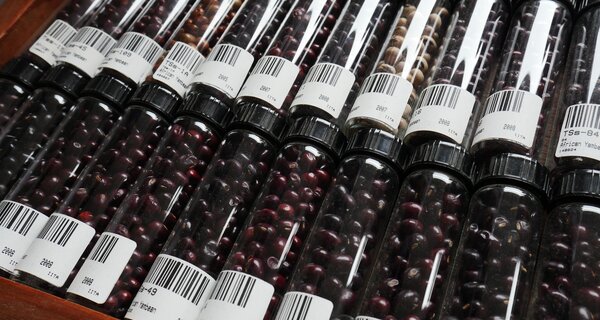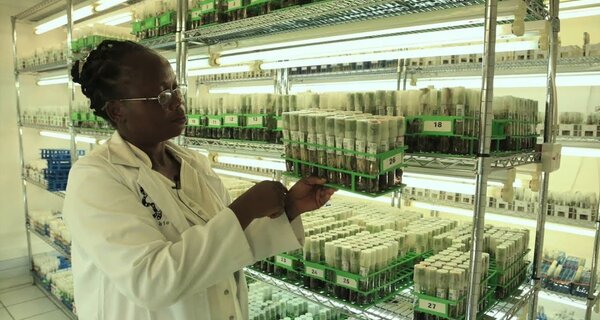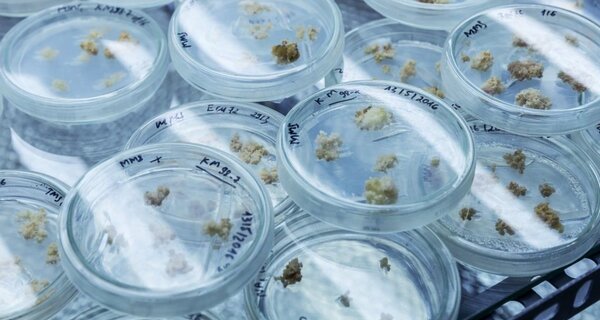The Power of Healthy Seeds: How Genebanks are Helping to Build a Resilient Food System
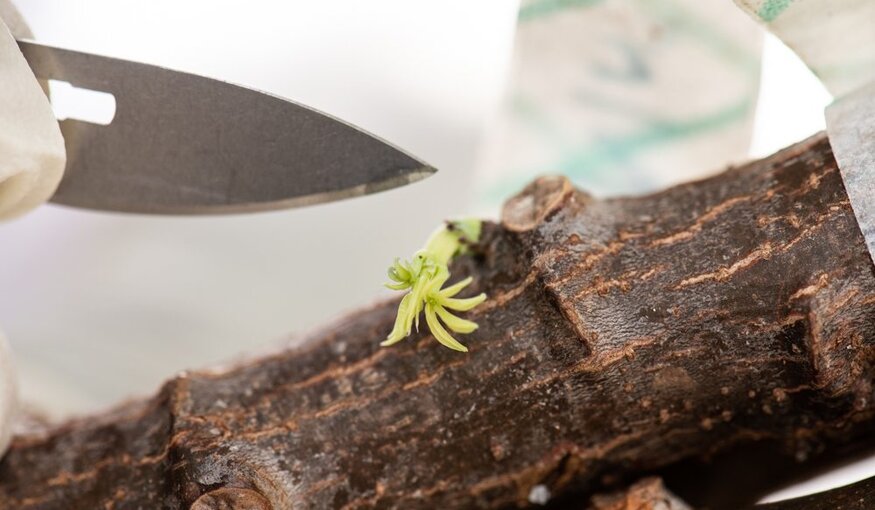
After a cassava sprout has been stored in a growth chamber with elevated temperatures which help remove viruses technicians excise a clean part of the tissue. (Photo: Michael Major/Crop Trust)
12 May 2023
Every night, farmers around the world go to bed worried about their crops. Will they wake up to discover that their banana plants have been suffering in silence as their roots succumb to Panama Disease? Or maybe that their maize field has been taken hostage by the hungry fall armyworm, an invasive pest that can’t be eradicated?
Sick plants are no good to anyone. The United Nations Food and Agriculture Organization (FAO) estimates pests and diseases cause annual food crop losses of up to 40%. This puts incredible stress on the food system and threatens the livelihoods of many smallholder farmers and the people that eat the food they produce. It’s also a worry for genebanks.
The Crop Trust is working with five national genebanks across Africa to enhance their daily operations, and that includes plant health management: the science and practice of understanding and overcoming the succession of biotic and abiotic factors that limit plants from achieving their full potential. The Seeds for Resilience Project assists the national genebanks of Nigeria, Zambia, Kenya, Ethiopia and Ghana in working toward reaching international standards of operation, ensuring collections are safe – and available for use – over the long term.
“Plant health management is an area that needs development in many genebanks and our aim is that the project supports the partners in setting a solid foundation,” said Nora Castañeda-Álvarez, Seeds for Resilience Project Leader. “We are focusing mainly on identification of the most common pathogens and pests that can affect the quality of the material they can conserve.”
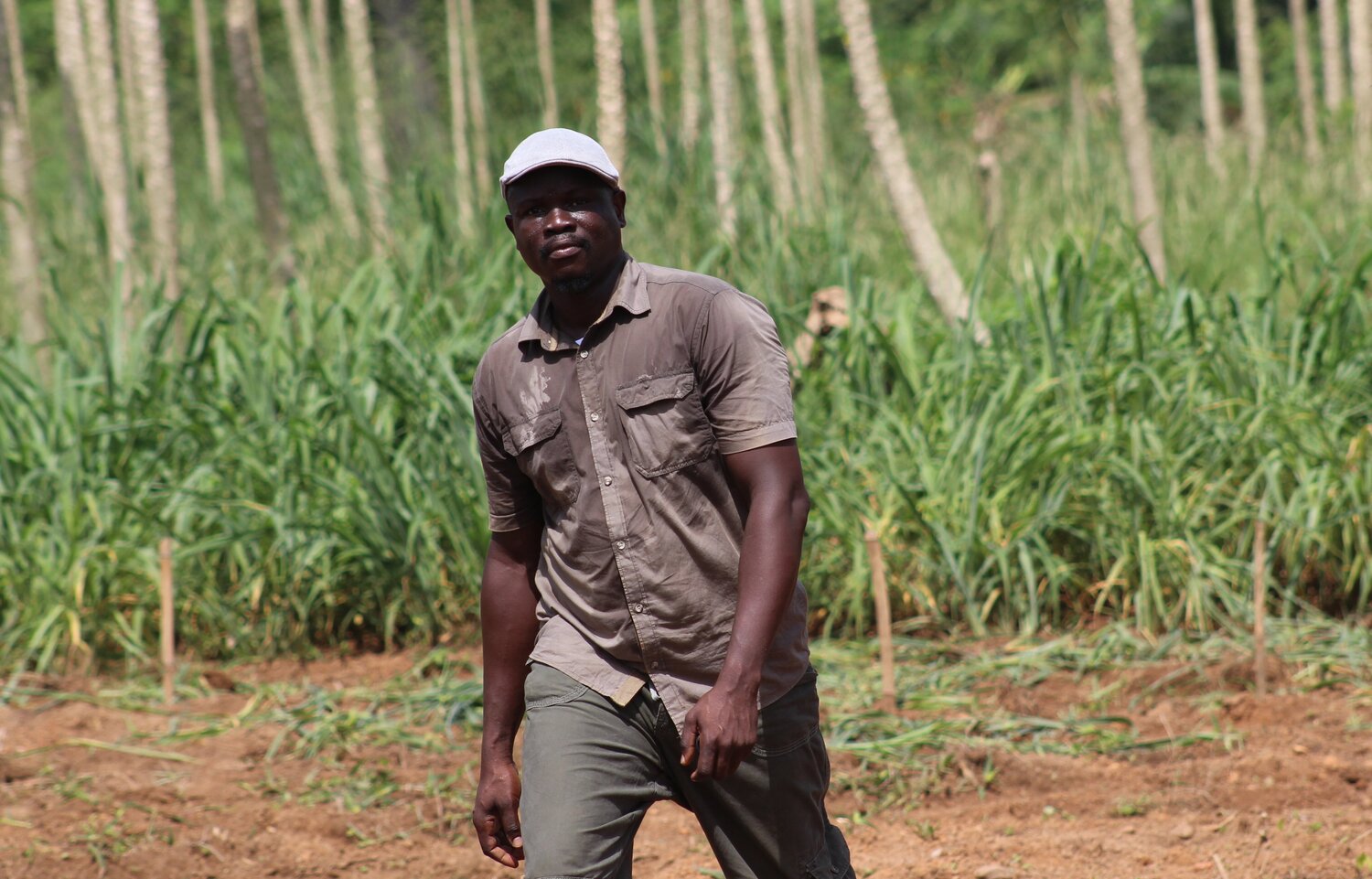
Dr. Daniel Ashie Kotey (Photo: CSIR-PGRRI)
This month the Crop Trust sat down with Daniel Ashie Kotey, the Director of the CSIR-Plant Genetic Resources Research Institute (CSIR-PGRRI), to learn about the importance of plant health in genebank operations and food security in Ghana. Kotey and his team are key partners of the Seeds for Resilience Project.
Crop Trust: How did you get into plant health management?
Kotey: I got interested in insect science after I took my first course in entomology at the University of Cape Coast in Ghana. I grasped the concepts of the course without much effort and it appeared as if the course came to me naturally. Upon my graduation from the same university in 2004, I was retained by the university to do my compulsory one-year national service as a teaching assistant at the Department of Entomology and Wildlife. Immediately after my national service, I was awarded a scholarship to undertake a two-year Master of Science degree in entomology at the West Africa sub-Regional Centre of the African Regional PostGraduate Programme in Insect Sciences (ARPPIS) at the University of Ghana, Legon. Upon graduation, I was appointed as a research scientist at the CSIR-PGRRI, which is the national genebank of Ghana.
My job at the genebank included regular inspection of newly acquired germplasm and other seed collections, regeneration plots and field genebanks for insect pests. I was also responsible for recommending appropriate management strategies for insect pest problems, and evaluating conserved germplasm for new sources of resistance. Another key activity I was also engaged in together with the plant pathologist and the head of the seed genebank was preparing germplasm for foreign distribution to ensure compliance with phytosanitary regulations.
What excites you most about what you do?
Some people might find it odd that someone would willingly study insects. The general perception is that no one needs to spend time to learn about insects since all insects are pests and the surest way to deal with them is to simply grab insecticide and spray to get rid of them. It is, however, exciting when you explain to people that there are both beneficial and detrimental insects and that sometimes insects become pests because of human intervention, including the inappropriate use of insecticides and ignoring good agricultural practices. It is also satisfying when you demonstrate non-chemical control methods for insect pests to farmers and they appreciate the effectiveness of such methods.
Why is plant health important for genebank operations?
The value of plant genetic resources lies in their use. Access to sufficient quantities of viable seeds by users can be constrained by insect pest infestation in the field, which can also predispose seeds to infection by pathogens. Aside from the direct damage to seeds, the infection of seeds by pathogens can serve as a barrier to seed distribution. Germplasm health is therefore an issue of primary concern in the management of plant genetic resources as it can affect the status and availability of the contents of genebanks.
Going beyond genebanks, why is plant health important for food security?
Insect pests and diseases can significantly reduce the yield of crops. And not only when the plant is in the field. Sometimes, a good yield is obtained in the field, but insect pests and diseases will attack the harvested crops and thus limit food availability through direct feeding damage or contamination with toxins. If we implement effective plant health measures, we can safeguard plants in the field against infestation, protect produce in storage and ultimately ensure that as many people as possible have access to sufficient quantities of wholesome food.
Can you share an example of a pest or disease impacting crops in Ghana?
The fall armyworm (FAW), which is native to the Americas, was first reported in Ghana in 2016. In 2017, FAW destroyed an estimated 14,247 hectares of farmland. That resulted in an average yield loss of 45%, which translated into an estimated economic loss of about USD 138-419 million. FAW causes damage not only by direct feeding but it can also lead to an infection of developing maize kernels with aflatoxin, which is a toxic substance. In Ghana, the risk of aflatoxin infection is heightened by weather conditions and poor post-harvest handling and storage methods. Once harvested produce is infested with aflatoxins, it cannot be consumed and has to be discarded. Such a waste!
What plant health management practices do you currently have in place at your genebank?
We conserve and study more than 2,700 accessions of a wide range of crops, including maize, cowpea, rice, eggplant, groundnuts, cassava and yam. We focus on preventive measures, which means avoidance and exclusion. For example, we isolate incoming material that we have collected or acquired in a secure facility for a duration of time that matches the gestation period of key pests or diseases. Additionally, we apply curative measures, such as modified atmospheres, and both synthetic and botanical pesticides. We also remove and destroy plants with visible virus symptoms from our fields.
What are your immediate goals for plant health management at your genebank?
Under Seeds for Resilience, we will build a screen house which will allow us to screen our crop collections to identify accessions with tolerance to specific pests or diseases. Additionally, we will begin regenerating plants in such a way as to prevent contact between the vector and the plant and, hopefully, result in the production of the very highest quality seeds.
Protecting plant health is essential to ensure food security, protect biodiversity, and safeguard our environment. It requires a collaborative effort among researchers, farmers, policymakers, and the public to implement effective plant health management practices. Healthy seeds are the foundation for a strong and resilient food system, forever.
Seeds for Resilience is a five-year project to support the national genebanks of Ethiopia, Ghana, Kenya, Nigeria and Zambia funded by the German government through the German development bank, KfW.
Categories: Seeds for Resilience, Food Security


